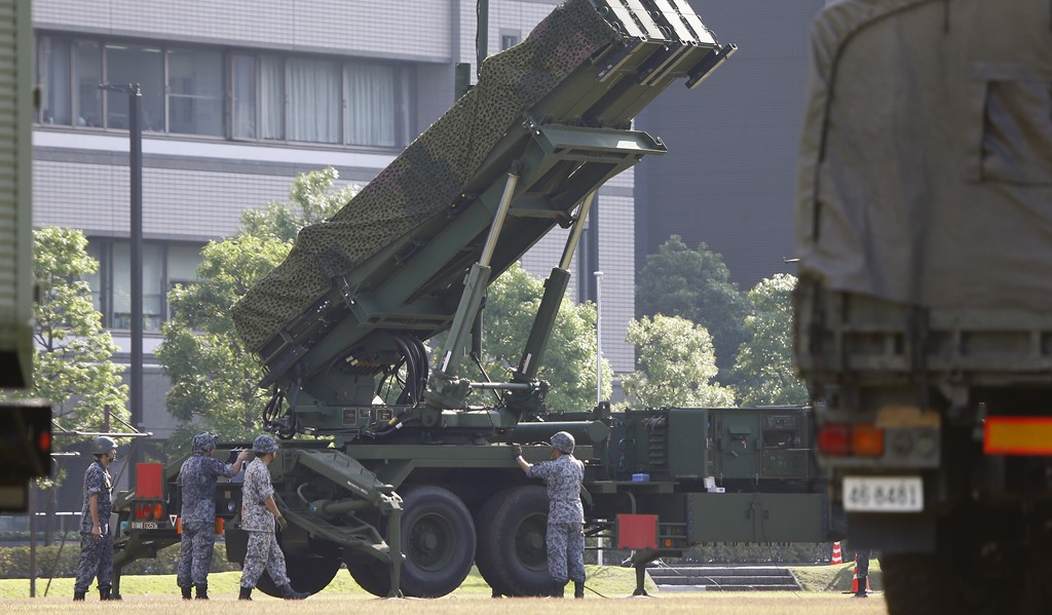In 2011, North Korea began an accelerated ballistic missile test program. Since then it has conducted 30 live-fire tests.
Belligerent theatrics always accompany the tests, with dictator Kim Jong Un playing a highly visible role in the propaganda drama. However, the latest tests, conducted on August 3, went beyond the usual script and entered -- literally and figuratively -- dangerous and provocative territory.
North Korea fired two missiles. One blew up immediately after launch -- a common occurrence. Compared to South Korea and the advanced nations it threatens, North Korea's manufacturing base is primitive.
However, the second missile flew 1,000 kilometers then splashed into the Sea of Japan. It was a provocative splash -- one Japan and its allies cannot ignore -- for the missile hit within Japan's maritime Exclusive Economic Zone. Missile tracking data has confirmed the strike location.
Japanese Prime Minister Shinzo Abe called the violation of Japan's EEZ "an intolerable act of recklessness." An EEZ isn't sovereign territory, not quite, but the North Korean test shot amounts to a calculated provocation. Japan has the internationally recognized right to defend its EEZ.
The Japanese government promised a "resolute response," in cooperation with the U.S. and South Korea. Senior government officials indicated Japan will demand the UN impose even stiffer economic and political sanctions on Pyongyang.
Soft power, however, hasn't deterred North Korean missile tests. The UN Security Council has already passed resolutions imposing harsh economic and political sanctions on North Korea and prohibited North Korea from conducting further ballistic missile launches.
No matter -- Pyongyang's missiles continue to fly.
Recommended
The North Korean test program has two obvious technical goals: improving missile reliability (recall my comment about the manufacturing base) and increasing missile range.
North Korea wants extended range missiles that can target the continental U.S. In March 2013, North Korea revealed that Austin, Texas (where South Korea's Samsung Electronics Co. has a manufacturing facility) is already a designated target. The Hawaiian Islands are already in range, as are parts of Alaska. Some analysts speculate that Pyongyang can hit the U.S. Pacific Northwest with missiles it currently possesses -- but that is speculation.
This isn't: South Korea and Japan are already within striking distance. This isn't speculation, either: North Korea intends to mount nuclear warheads on these improved missiles. Nukes on long-range missiles advance North Korea's extortion racket. The racket amounts to this: pay us off with food and financial aid or we will launch a nuclear war and incinerate you.
What is Japan going to do? Japan has already amended its constitution to permit offensive military strikes conducted in the defense of Japanese territory. Japan is not ready to attack North Korea, but it is no secret that Japan is fed up with North Korean threats.
Japan has military options short of attacks on North Korea. In February, Japan's defense minister indicated that the Japanese military would intercept any North Korean missile that threatened the country. Everyone interpreted that to mean defending land territory, but Japan could intercept a future North Korean test that approaches its EEZ. It is an option.
Japan and South Korea are both investing in improved ballistic missile defense systems. Japan has Aegis guided missile destroyers carrying anti-ballistic missiles. Last month South Korea confirmed it would deploy America's Terminal High Altitude Air Defense missile defense system. The system will be sited in southern South Korea, in a position where it can protect approximately two-thirds of South Korea's land territory. Both Japan and South Korea have access to US surveillance and missile-tracking intelligence data. This improves ABM accuracy.
North Korea has escalated. Its targets understand the threat -- and they are responding.























Join the conversation as a VIP Member